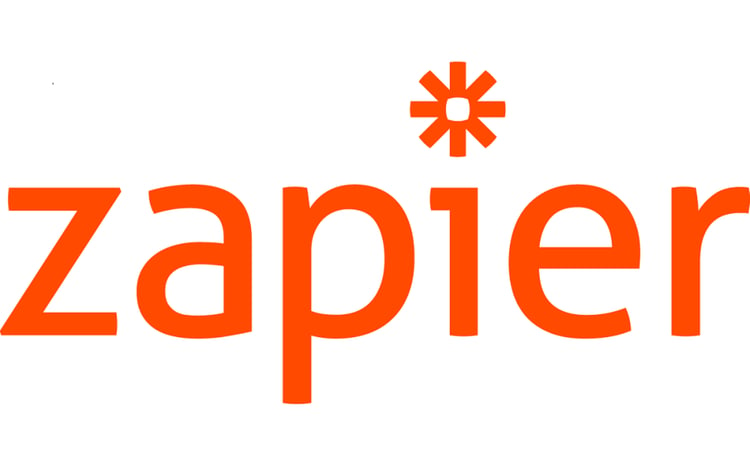
Zapier, a leader in the automation platform industry, has once again made headlines with the introduction of its newest offering: Canvas. This state-of-the-art, Zapier AI-powered flowchart tool represents a significant leap forward in technological advancements for the company. Canvas is meticulously crafted to provide businesses with a transformative approach to planning and visualising their most crucial processes. In an era where efficiency and clarity are paramount, Canvas promises to be one of the best AI tools for business that will reshape the way organisations map out and understand their workflows, ensuring that they can operate with greater precision and foresight. The integration of AI business automation not only enhances its capabilities but also ensures that users have a more intuitive and streamlined experience, making complex tasks simpler and more manageable. With Canvas, Zapier continues its tradition of pushing boundaries and setting new standards in the world of AI automation for business.
What is Canvas?
Canvas is far more than a mere flowchart tool, it is a sophisticated and intelligent solution, meticulously designed to aid users in the intricate task of planning and illustrating their vital business processes. Zapier's introduction of Canvas offers sophisticated visual mapping features to simplify workflows. Coupled with their automation-centric database solution, Tables, users are equipped to design, oversee, and fine-tune their business operations effortlessly. Leveraging the strength of AI, Zapier consistently champions businesses in crafting streamlined, AI automation processes.
What truly distinguishes Canvas from its counterparts is its seamless integration of cutting-edge artificial intelligence. This Zapier AI integration empowers users to effortlessly convert these meticulously planned processes into automation based on Zapier's robust platform. As of now, Canvas is in its nascent early access phase. This suggests that it's still in the process of evolution, and users can eagerly anticipate a plethora of additional features and enhancements as it matures, making it one of the best AI tools for business.
How does it work?
At its core, Canvas is a visual diagramming instrument, crafted to provide users with a platform to articulate and delineate their processes from inception to culmination. One of the standout features of Canvas is its intuitive interface, which grants users the capability to modify the components that are linked with Zapier, all from within the Canvas environment. Looking ahead, the ambitious vision for Canvas is to evolve into a platform where users can edit any component, regardless of whether it has a direct linkage to Zapier or not.
But there's more to Canvas than just the manual creation of diagrams. It boasts an integrated Zapier AI mechanism that's designed to proactively offer process suggestions, tailored to the specific problem or scenario the user is grappling with. So, whether you're in the midst of orchestrating an elaborate birthday bash or navigating a multifaceted business issue, Canvas is equipped to intuitively generate a process blueprint tailored for you. To further enhance user experience, Canvas is set to introduce a comprehensive template library, offering a diverse range of templates for users to select and customise according to their needs.
What features does it have?
1. From static to automatic: Canvas is not just about creating static diagrams. It's an automation-centric tool that's action-oriented. With Canvas, users can bypass the tedious trial and error phase. They can plan potential workflows with Zaps, Tables, and Interfaces, and receive AI business automation suggestions on the next automation steps. Once a workflow is finalised, it can be instantly converted into an automated solution to propel your work.
2. Plan workflows: Canvas integrates all of Zapier's existing tools, integrations, and products, enabling users to draft processes with a clear understanding of the resources at their disposal.
3. Visualise comprehensive processes: Canvas is not just a planning tool. It aids in elucidating processes for teams, marking areas requiring human intervention, linking Tables for data storage, and connecting to existing Zaps and Interfaces.
4. Collaborative planning: Canvas promotes teamwork. Users can collaborate with colleagues to devise solutions using Zaps, Tables, and Interfaces. They can also share their plans with stakeholders to secure approval.
5. Efficient automation with AI: When users are set to begin automation, Canvas's AI business automation capabilities transform their plan into an optimised Zap to achieve the desired outcome.
6. Discover more automation avenues: Canvas's AI also offers recommendations on subsequent automation steps based on the apps in use and previous automations, making it one of the best AI tools for business.
In today's rapidly changing world of business automation, the need for advanced tools has never been more pronounced. Canvas may become indispensable for addressing and resolving the intricate challenges businesses face daily. By introducing Canvas, Zapier AI has not merely provided another tool but has presented a comprehensive, unified platform. This platform empowers businesses to both visualise their complex operations and seamlessly automate them. By bridging the gap between planning and execution, Canvas plays a pivotal role in amplifying productivity, enhancing efficiency, and ensuring that businesses can thrive in a competitive environment. As businesses continue to seek ways to optimise their operations, innovations like Canvas will be at the forefront of driving transformative change in the industry.
Grow your business with NEXA and the latest tech advancements in the industry
Interested in learning more about the latest tech developments and how you can leverage them to grow your business? NEXA proudly keeps its finger on the pulse of all new developments in the market, and we are perfectly positioned to help you integrate smart automation tools into your operations.
Speak to us today to find out more.
%20(1).png?width=2701&height=607&name=BRC_NEXA_LOGO_WHITE%20(2)%20(1).png)
